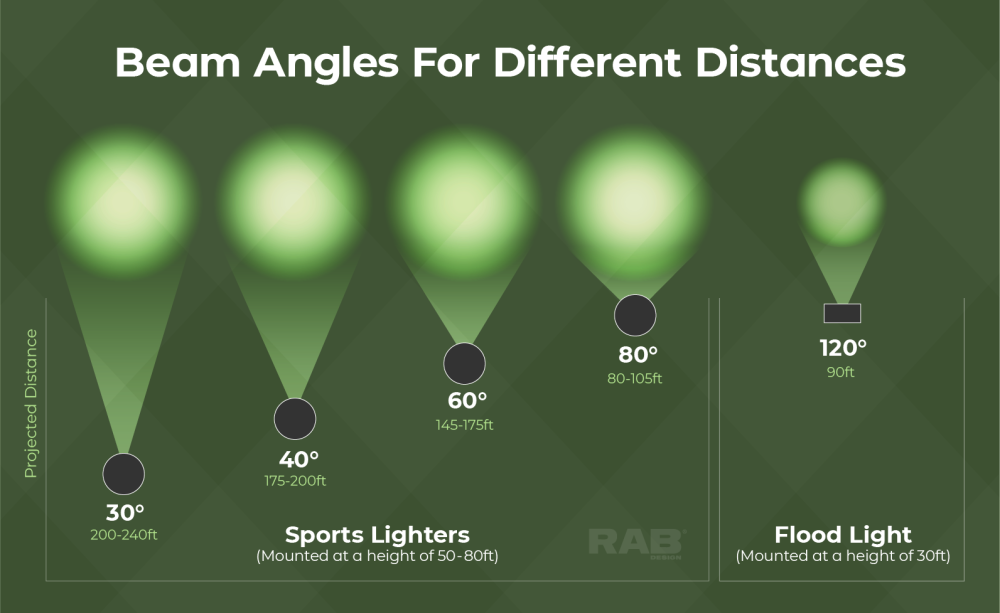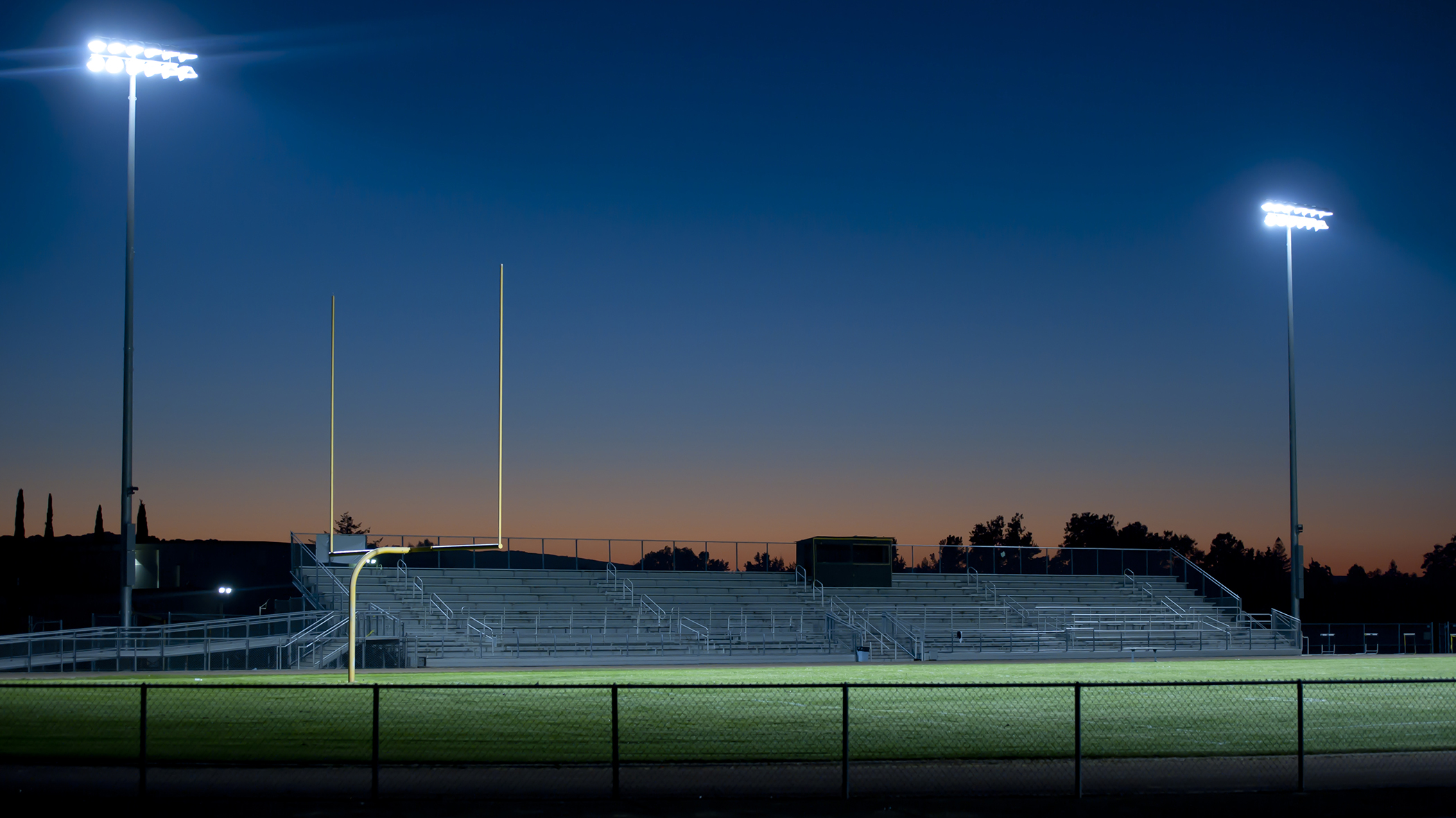Outdoor sports lighting can be a complex field with many different variables and considerations. In this blog series, we will distill some of the key ideas to help you decide if it is right for your sports field.
This is the first of a series of blogs covering sports flood lights. Sports lighting is used for baseball, football, soccer, tennis courts, hockey rinks, and more. This blog outlines some of the major differences when comparing a sports flood light to a regular flood light. Beyond the obvious fact that a sports lighter is a specialty fixture intended for outdoor sports fields, regular floods are often used as the lower cost option.
There are several things to consider when thinking about the right fixture to use at your facility/field, the most important one being light level requirements. Light level requirements can vary depending on the classification of the field, the level of competition, the users of the facility, existing light levels, and existing light sources being used. For example, in a university football field, prescribed light levels as recommended by the IES Handbook are from 200 lux/20 footcandles to 1000 lux/100 footcandles on the horizontal and 50 lux/5 footcandles to 300 lux/30 footcandles. A lighting layout comparing light levels from a sports lighter to a regular flood will provide an indication of the difference in light levels and uniformity of light spread. Reach out to lightingdesigns@rabdesign.ca to get a conversation started on a custom layout design for your facility/field.
Moving on, we will now look at some of the key differences between a general flood light and a sports flood light.
Higher Lumen Output
One big difference is that sports flood lights tend to be the higher end option. Sports flood lights generally deliver higher lumens, sometimes over 100,000 lumens. A big benefit of the higher lumens is that the sports flood lights can be mounted at larger distances and heights. These lights need to be able to perform, even if they are 100 feet in the air, for example if they are mounted on a pole overlooking a football field. Sports lighting is designed to project a beam of light out a certain distance and from a certain mounting height (See chart 1 below). Flood lighting on the other hand is designed to illuminate at a shorter distance out from the pole or mounting location.
General purpose floods usually go up to about 60,000 lumens and are ideal for mounting heights of 20 to 40 feet. As stated earlier, this means for mounting heights greater, specialty sports floods provide a significantly higher lumen output.
Higher lumen output is derived through higher wattage or more power being consumed by the fixture. A good metric when comparing fixtures is efficacy or lumens per watt or LPW. RAB Design’s sports light has an efficacy of 150 lumens per watt. It is DLC 5.1 Premium which is key to securing rebates, depending on your region.
Different Beam Patterns and Options
Sports flood lights will typically have more options for beam patterns compared to regular floods as sports floods need to have a much larger variety of patterns and angles to fit how they are being used. The narrow beams are needed to project the light out a greater distance, 200 to 240 feet, the 60 degree angle reaches 145 feet to 175 feet and the 80 degree beam would be under 105 feet (see chart 1). In a way a sports flood light is really more like a spotlight that is projecting light out to a certain spot while a general purpose flood light is just looking to spread the light out.
A clear example of why the angle of the beam pattern is so important for a sports flood compared to a regular flood can be seen in the example of lighting up a baseball diamond. For areas that need greater amounts of light, you need a better control of that beam of light. In this example, on a baseball diamond the outfield poles would require a narrow beam of light 20 degrees to illuminated from the bases back towards the poles along with a wide 80 degree beam to illuminate out to 80 feet from the pole.
Let’s say there’s a pop fly and the outfielder is looking upwards to catch the ball, the last thing you want is for the player to be blinded by the light. Being able to configure the beam to shine at an angle that avoids this problem is key for sports floods.

Weight & Footprint
Sports lights have a larger footprint and weigh more compared to regular floods. This is an important consideration for Installers
If you found this blog useful, blog stay tuned for the next blog covering sports flood lights coming out soon!
Also, as a helpful tool, we have included a checklist to help you decide whether sports flood lighting is the right choice for your facility, so be sure to check that out.

